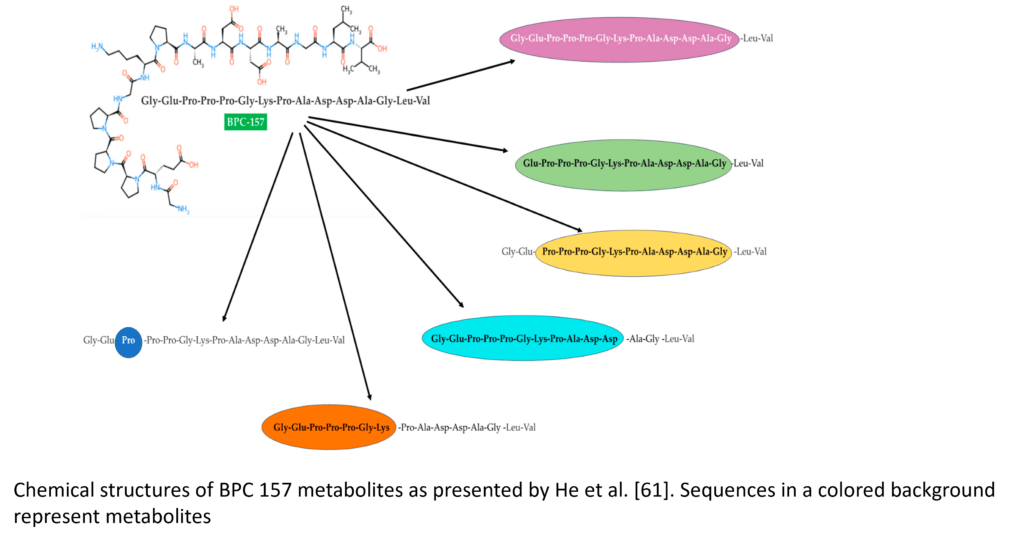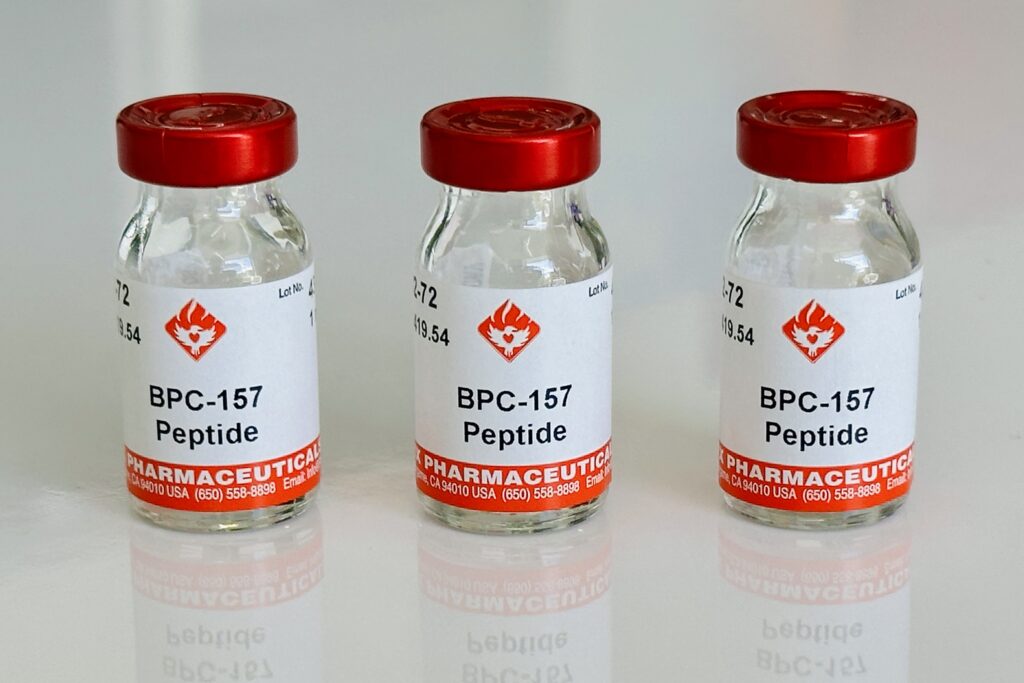BPC 157 Peptide
Abstract
What is BPC 157?
BPC-157 is a 15-amino acid long oligopeptide. It was discovered during research on human gastric juice.
What are some potential benefits and research related to BPC 157?
-
Wound Healing:
Studies suggest BPC-157 may accelerate wound healing, including burns, and may be effective in treating both traumatic and systemic wounds.
-
Tissue Repair:
Research indicates it may promote the repair of damaged tissues, including tendons, ligaments, and bones.
-
Brain Trauma:Some studies in rodent models show that BPC-157 may reduce immediate and delayed damage induced by brain trauma.
BPC157 as Potential Agent Rescuing from Cancer Cachexia
Abstract: Cancer cachexia, one of the metabolic syndromes caused by cancer, is a devastating and miserable condition encountered in more than 50% of terminal cancer patients presenting with significant weight loss associated with skeletal muscle atrophy and fat loss. Though cachexia may account for up to 20% of cancer deaths, no significant treatment is still lacking and is of urgent unmet medical need in cancer treatment. Therefore, understanding the underlying molecular mechanisms is essential for anticipating therapeutic approaches. Since the primary events driving cachexia are mediated via either the central nervous system relatedor inflammation related-anorexia, hypoanabolism, and hypercatabolism, therapy usually targets nutritional support to compensate reduced food intake along with some anti-inflammatory agents to cover specific inflammation-related metabolic derangement, and encourages exercise to supplement reduced physical activity, but all proven to be not so effective so far. Therefore, combination therapies such as a standard multi-modal package including an anorexic agent, megestrol acetate, and anti-inflammatory agent coupled with the development of potential novel therapeutics promise a new era in rescuing patients from cancer cachexia. In this review, we propose the potential application of BPC157, one of the active cytoprotective agents isolated from gastric juices for cancer cachexia. Before clinical trial, we introduced the evidence showing BPC157 rescued from cancer cachexia supported with explored mode of actions.
Pharmacokinetics, distribution, metabolism, and excretion of body-protective compound 157, a potential drug for treating various wounds, in rats and dogs
Abstract: Body-protective compound (BPC) 157 demonstrates protective effects against damage to various organs and tissues. For future clinical applications, we had previously established a solid-phase synthesis process for BPC157, verified its biological activity in different wound models, and completed preclinical safety evaluations. This study aimed to investigate the pharmacokinetics,
excretion, metabolism, and distribution profiles of BPC157. After a single intravenous (IV) administration, single intramuscular (IM) administrations at three doses in successive increments along with repeated IM administrations, the elimination half-life (t1/2) of prototype BPC157 was less than 30 min, and BPC157 showed linear pharmacokinetic characteristics in rats and beagle dogs
at all doses. The mean absolute bioavailability of BPC157 following IM injection was approximately 14%-19% in rats and 45%-51% in beagle dogs. Using [3H]-labeled BPC157 and radioactivity examination, we proved that the main excretory pathways of BPC157 involved urine and bile. [3H]BPC157 was rapidly metabolized into a variety of small peptide fragments in vivo, thus forming single amino acids that entered normal amino acid metabolism and excretion pathways. In conclusion, this study provides
the first analysis of the pharmacokinetics of BPC157, which will be helpful for its translation in the clinic.
Schematics

Figure from Pharmaceuticals 2025, 18(2), 185; https://doi.org/10.3390/ph18020185
More Information
-
Not for Human Use:
Our BPC-157 peptide is for research use only.
-
Athletes:
Athletes are advised to avoid using products marketed for “research only” due to potential risks.
-
USADA:
The US Anti-Doping Agency (USADA) states that there’s no legal basis for selling BPC-157 as a drug, food, or dietary supplement primarily due to safety concerns.
-
Limited Human Studies:
Currently, there are no studies confirming safe or effective use in humans, either taken orally or injected.
-
Further Research:More research is needed to fully understand the potential benefits and risks of BPC-157 in humans.

